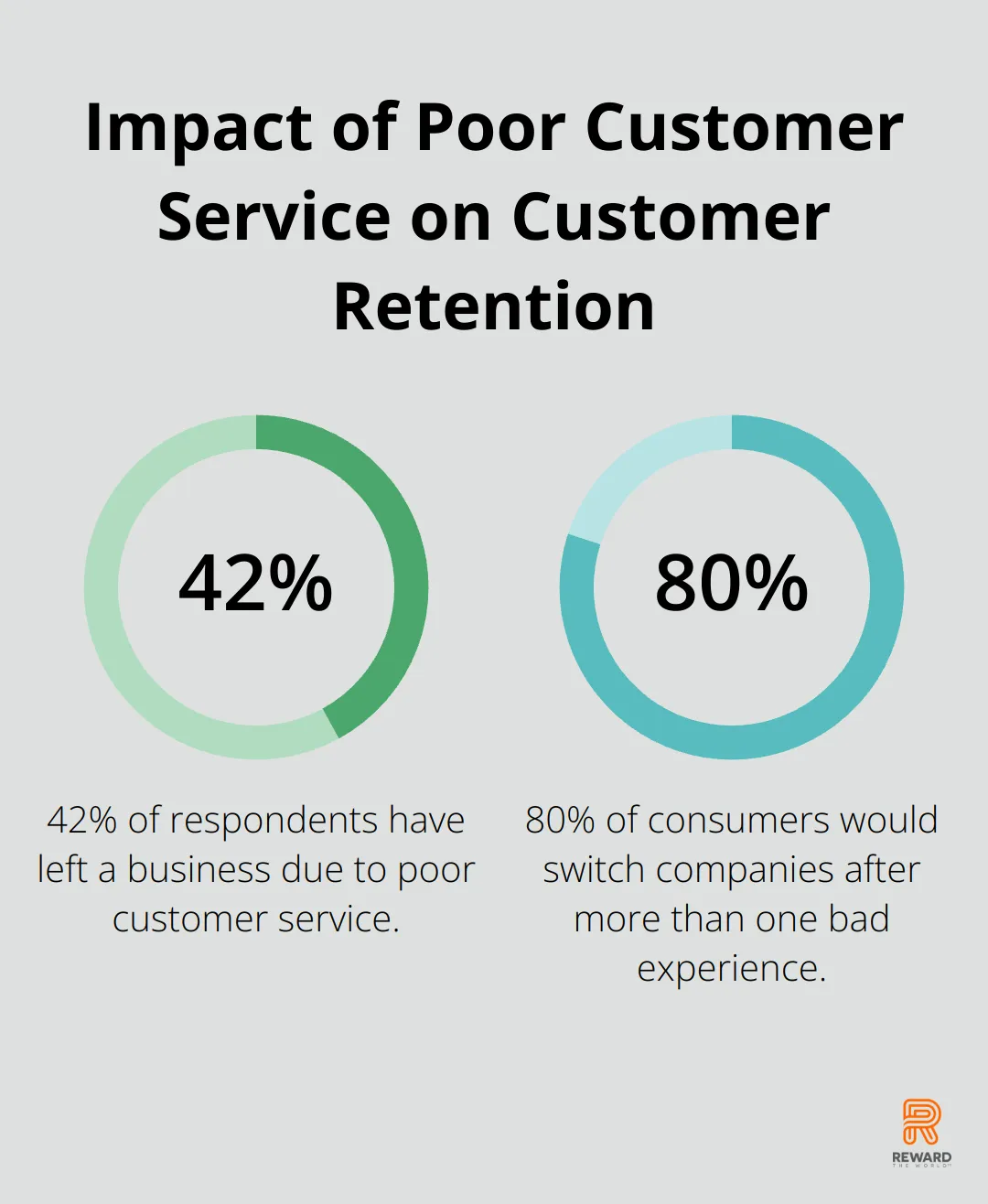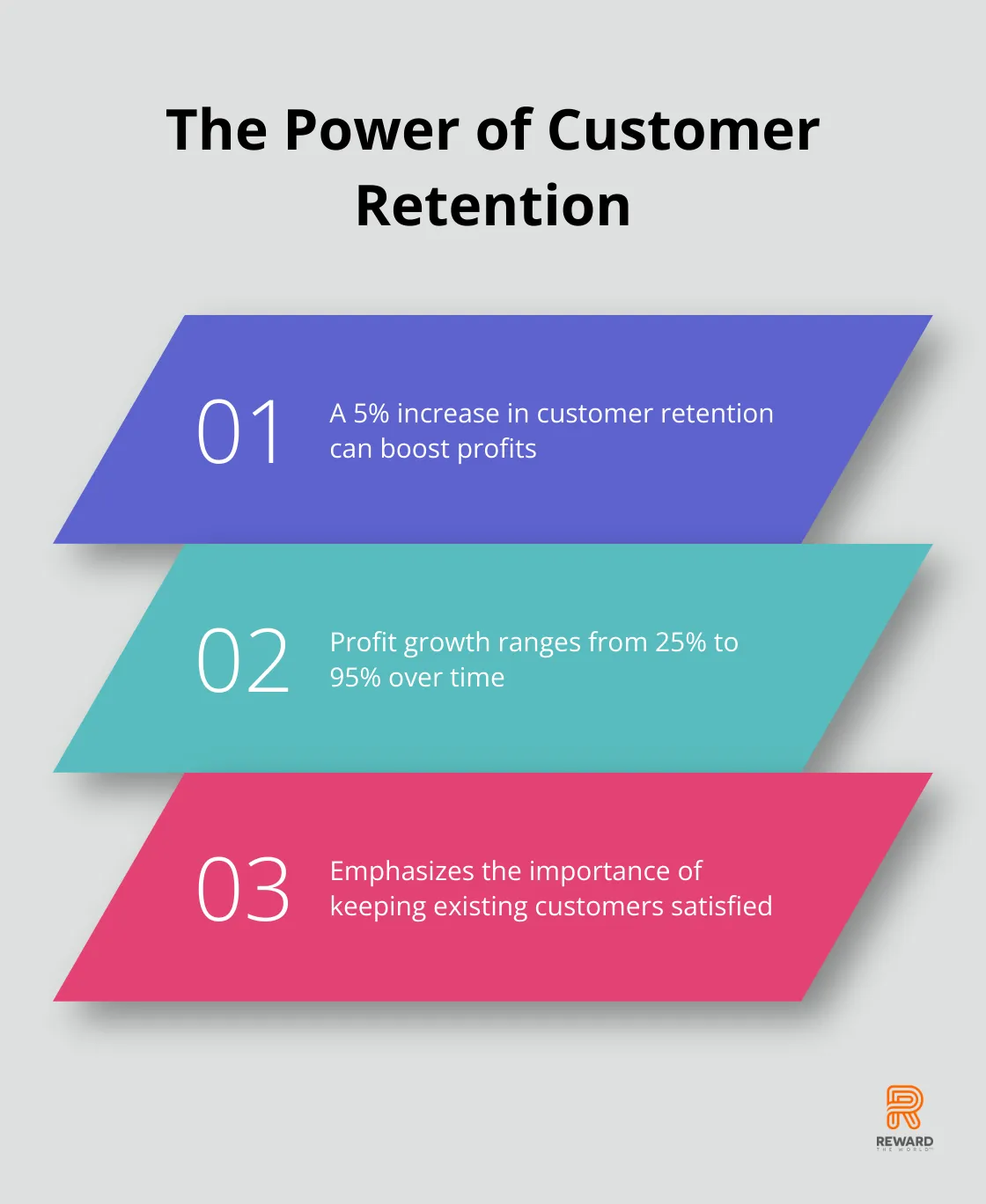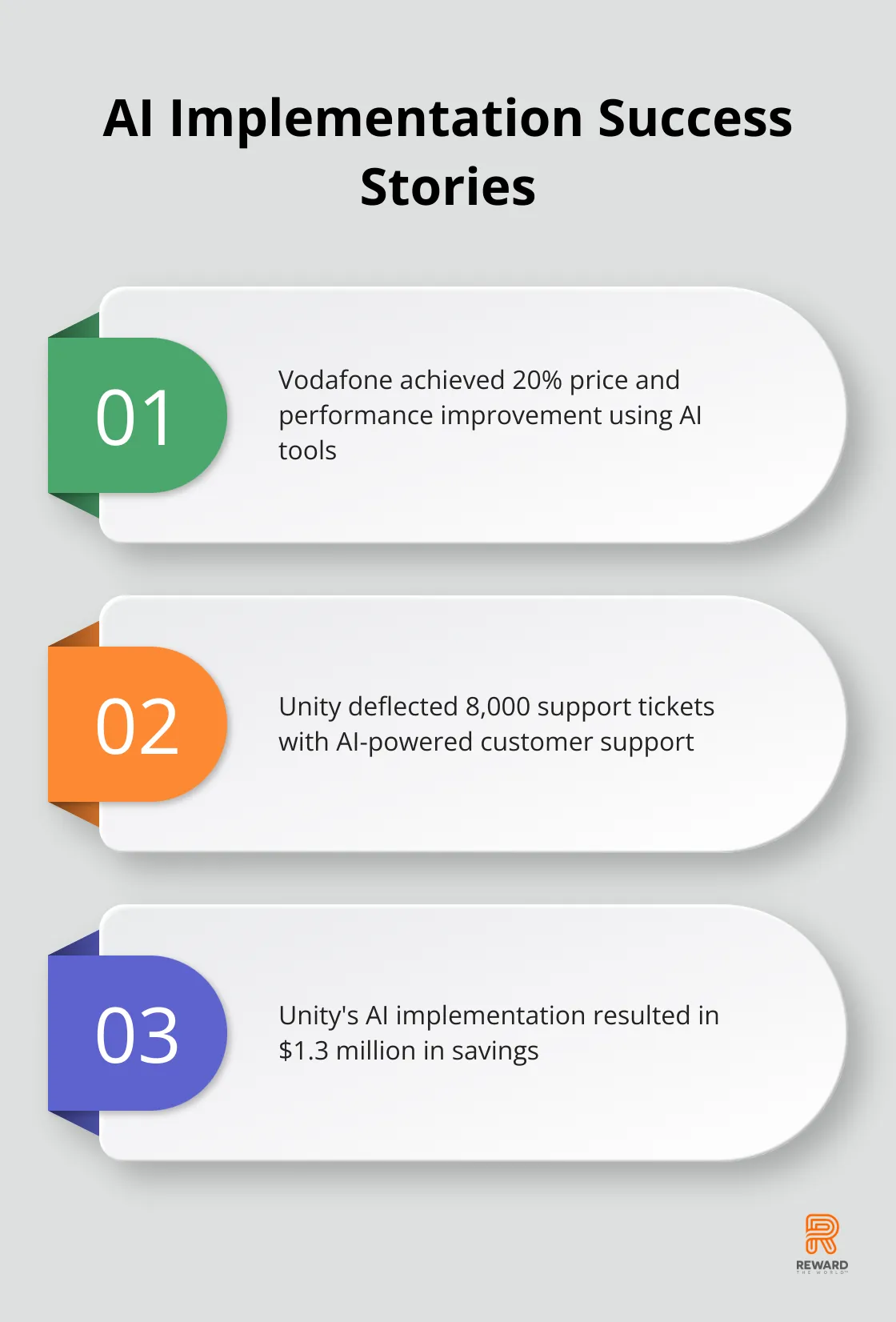
Customer defection is a major challenge for businesses, costing them billions in lost revenue each year. At Reward the World, we’ve seen firsthand how artificial intelligence (AI) can revolutionize customer retention strategies.
This blog post explores how AI-powered solutions, including predictive churn models, can help companies identify at-risk customers and take proactive measures to keep them engaged. We’ll dive into practical strategies and tools that businesses can implement to reduce churn and boost customer loyalty.
Why Customers Abandon Ship: Understanding Customer Defection
The Definition of Customer Defection
Customer churn, also called customer attrition, is the number of paying customers who fail to become repeat customers. This phenomenon plagues businesses across industries, causing significant revenue losses. At Reward the World, we recognize the devastating impact churn can have on companies of all sizes.
Root Causes of Customer Exodus
Poor customer service tops the list of reasons why customers leave. A study revealed that 42% of respondents have left a business due to poor customer service. After more than one bad experience, around 80% of consumers say they would switch companies. Other common culprits include:
- Excessive prices or hidden fees
- Lack of personalized experiences
- Inconsistent service across channels
- Competitor’s superior offers
- Product quality issues
Interestingly, many of these problems can be mitigated through effective reward and loyalty programs (such as those offered by Reward the World).

The Hefty Price Tag of Customer Loss
The financial impact of customer defection is staggering. Statistics show an increase in customer retention by 5% can lead to a company’s profits growing by 25% to around 95% over a period of time. This statistic underscores the importance of keeping existing customers satisfied.
Consider these eye-opening facts:
- Acquiring a new customer costs five times more than retaining an existing one (Invesp).
- The success rate of selling to an existing customer ranges from 60-70%, while it’s only 5-20% for new customers (Marketing Metrics).
- Loyal customers are 5x more likely to repurchase, 5x more likely to forgive, 4x more likely to refer, and 7x more likely to try a new offering (Temkin Group).

Red Flags: Spotting Potential Defectors
To prevent customer defection, businesses must identify early warning signs. These indicators include:
- Decreased engagement with products or services
- Reduced purchase frequency or amount
- Increased number of complaints or support tickets
- Negative feedback on social media or review sites
- Lack of response to marketing communications
Companies that monitor these indicators can take proactive steps to address issues before they escalate into churn. This is where AI-powered solutions prove invaluable, as they analyze vast amounts of data to predict potential defectors with remarkable accuracy.
The Role of AI in Churn Prevention
As we move into the next section, we’ll explore how artificial intelligence transforms customer retention strategies. AI-powered tools (like those integrated into Reward the World’s platform) enable businesses to detect early signs of churn, personalize customer experiences, and implement targeted retention campaigns. These advanced technologies empower companies to stay ahead of customer defection and build stronger, more loyal customer relationships.
How AI Transforms Customer Retention
Predictive Analytics: The Game-Changer
AI is here, AI is everywhere: Top companies, governments, researchers, and startups are already enhancing their work with Google’s AI solutions. These systems analyze historical data, purchase patterns, and customer interactions to identify at-risk customers months before they’re likely to churn.
Vodafone implemented an AI-based platform using tools like Vertex AI Search and Model Garden, delivering fast, personalized responses. This resulted in a 20% price and performance improvement using Google’s solutions.
Personalized Experiences: The Loyalty Booster
AI excels at creating tailored customer experiences that increase loyalty. It analyzes customer data to recommend products, customize communication, and even adjust pricing based on individual preferences and behaviors.
A report by Epsilon revealed that 80% of consumers are more likely to make a purchase when brands offer personalized experiences. Netflix uses AI to personalize content recommendations, which reportedly saves the company $1 billion annually in customer retention.
Automated Customer Support: The 24/7 Solution
AI-powered chatbots and virtual assistants provide instant, round-the-clock customer support, addressing issues quickly and efficiently. This immediacy matters, as 82% of consumers expect an immediate response to sales or marketing questions.
Esusu, a financial technology company, implemented AI-driven customer support tools and observed a 64% drop in first reply time and a 34% reduction in resolution time. This improvement in response times directly correlates with increased customer satisfaction and reduced churn.
Sentiment Analysis: The Real-Time Insight Provider
AI-driven sentiment analysis tools monitor social media, review sites, and customer feedback to gauge public opinion about a brand. This real-time insight allows companies to address negative sentiment quickly and capitalize on positive feedback.
JetBlue (an airline company) uses AI-powered sentiment analysis to monitor social media mentions. This approach helped them improve their Net Promoter Score by 10 points over three years.
While AI offers powerful tools for customer retention, it’s important to note that technology should enhance (not replace) human interaction. The most effective retention strategies combine AI’s analytical power with the empathy and understanding that only human touch can provide.
As we move forward, we’ll explore how businesses can implement these AI solutions effectively to maximize customer retention and drive long-term growth.
How to Implement AI for Customer Retention
Select the Right AI Tools
The first step is to choose AI tools that align with your business goals. For predictive analytics, platforms like H2O AI Cloud can forecast customer churn with high accuracy. For personalization, solutions like Dynamic Yield or Optimizely use AI to tailor customer experiences in real-time.
For automated customer support, chatbot platforms like Intercom or Drift offer AI-powered solutions that handle a wide range of customer inquiries. For sentiment analysis, tools like Brandwatch or Sprout Social provide valuable insights into customer opinions across various channels.
Integrate with CRM Systems
Integrating AI tools with your existing Customer Relationship Management (CRM) system is essential for success. Most modern CRM platforms (such as Salesforce or HubSpot) offer native AI capabilities or easy integration with third-party AI tools.
Salesforce Einstein AI enables businesses to use customer data to create personalized, predictive experiences that lead to improved outcomes. HubSpot’s AI tools automate lead scoring and provide predictive analytics for sales forecasting.
Empower Your Team
AI can automate many tasks, but it’s important to train your staff to work alongside these new technologies. Provide comprehensive training on how to interpret AI-generated insights and when to intervene with a human touch.
Train your customer service team to handle complex issues that AI chatbots escalate. Sales teams should learn how to use AI-generated lead scores and churn predictions to prioritize their outreach efforts.
Measure AI Effectiveness
To ensure your AI investments pay off, establish clear metrics for success. Key performance indicators (KPIs) might include:
- Reduction in churn rate
- Increase in customer lifetime value
- Improvement in Net Promoter Score (NPS)
- Higher customer satisfaction scores
- Reduced response times for customer inquiries
Review these metrics regularly and adjust your AI strategies accordingly. Unity, a leading game development platform, implemented AI-powered customer support and saw a dramatic improvement. By connecting with Unity’s knowledge base, the AI agent deflected 8,000 tickets, which resulted in $1.3 million in savings.

Implementing AI for customer retention is an ongoing process. Refine your approach continuously based on results and emerging technologies. With the right strategy, AI can significantly boost your customer retention efforts and drive long-term business growth.
Final Thoughts
AI has revolutionized customer retention strategies with powerful tools to prevent defection and boost loyalty. Predictive churn models identify at-risk customers before they leave, while personalized experiences create stronger brand connections. Automated support systems address customer needs 24/7, and sentiment analysis provides real-time insights into customer opinions.
The future of AI-driven customer retention promises more sophisticated predictive models and human-like virtual assistants. Companies must strike a balance between AI’s analytical capabilities and human empathy to build genuine customer relationships. Effective strategies will combine AI-driven insights with personalized interactions for sustainable growth.
Reward the World understands the power of AI-driven insights combined with personalized rewards to prevent customer defection. Our global incentives platform delivers instant rewards, fostering customer loyalty and boosting engagement. Companies that effectively harness AI’s potential while maintaining a human-centric approach will cultivate a loyal customer base and drive long-term success.
